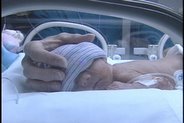Hospitals struck by new killer bug | Metro.co.uk
Tuesday, May 6, 2008A new hospital superbug resistant to all antibiotics could be killing hundreds of patients, experts have warned.
The infection, known as 'Steno', is on the increase and could be harder to tackle than MRSA and C.difficile.
The bug spreads almost exclusively in hospitals through wet areas such as taps and shower heads, and is thought to kill a third of the people it infects after entering the bloodstream.
Chemotherapy patients, including children, are among those most in danger, because the infection spreads through ventilation tubes and catheters.
There are about 1,000 reports of Steno blood poisoning in Britain each year, according to today's study by the Wellcome Trust Sanger Institute, near Cambridge.
Research leader Dr Matthew Avison said: 'This is the latest in an ever-increasing list of antibiotic-resistant hospital superbugs.
'The degree of resistance it shows is very worrying. Strains are now emerging that are resistant to all available antibiotics.'
MRSA is thought to have caused 1,652 deaths in 2006, up from 51 in 1993. Clostridium difficile was mentioned on 6,480 death certificates in 2006, a 72 per cent rise on 2005.
Steno sticks to catheters or medical tubes and grows into a so-called 'biofilm'. When the catheter is next flushed, the bug enters the patient's bloodstream and can cause septicaemia, especially if their immune system has already been weakened.
The onus is on both patients and healthcare professionals to do more to keep equipment clean, Dr Avison told the Genome Biology journal.
Stenotrophomonas is another pathogen that we've isolated from the hospital environment. In our study, we were able to culture Stenotrophomonas from surfaces in the Heating Ventilation and Air Conditioning (HVAC), surfaces in NICU as well as in the tracheal aspirates of the patients. As mentioned in the article, this bug likes water--and that is where we found it, in the water of the HVAC drain pan.
As we look to decrease Hospital Acquired Infections (HAI), we should consider all the reservoirs for pathogens. Neutralizing the source of an infectious agent is the key to long term success in infection prevention. Is the Stenotrophomonas in the HVAC water making its way into the care areas? It's hard to say and expensive to prove.
So, we focus a lot of attention on 'end of the pipe' solutions such as hand washing. This is a good thing. But at the same time we should eradicate the factories where pathogens are generated and distributed within a health care facility. Our research has shown that one such factory is the HVAC system. We've also shown that VIGILAIR® can eliminate this reservoir as a potential source.


No comments:
Post a Comment